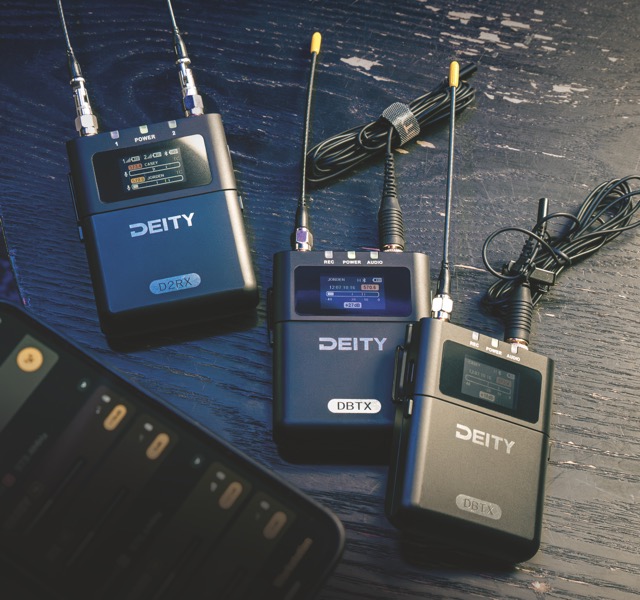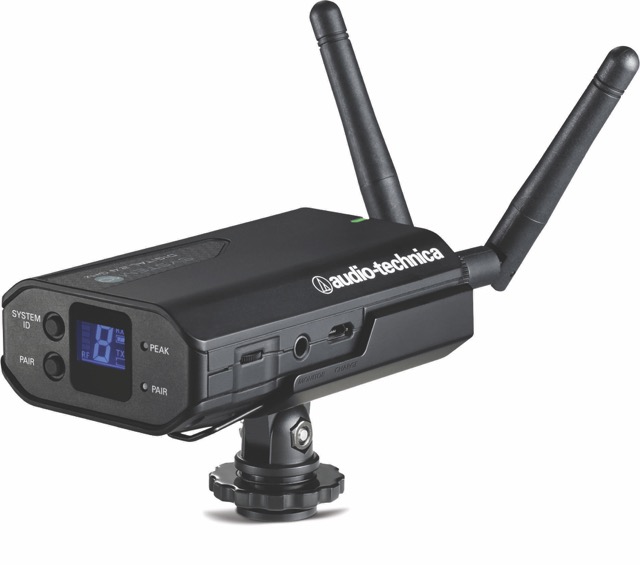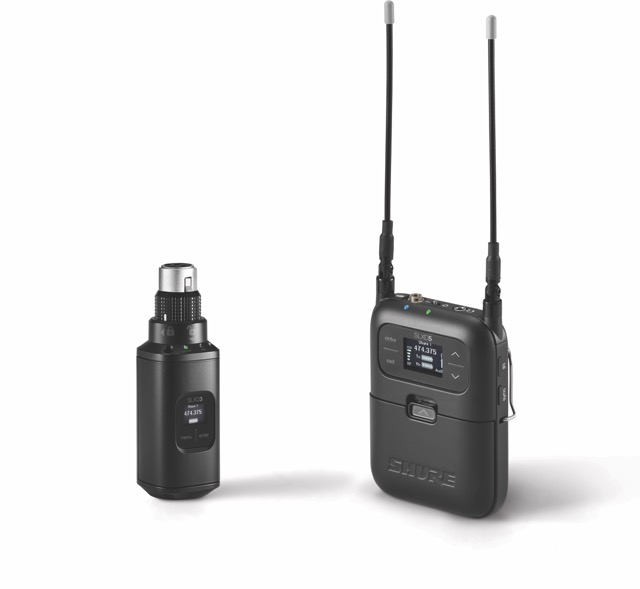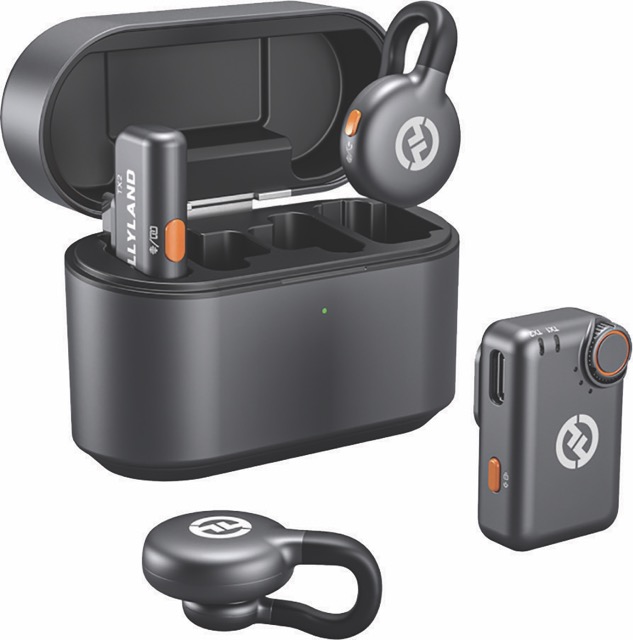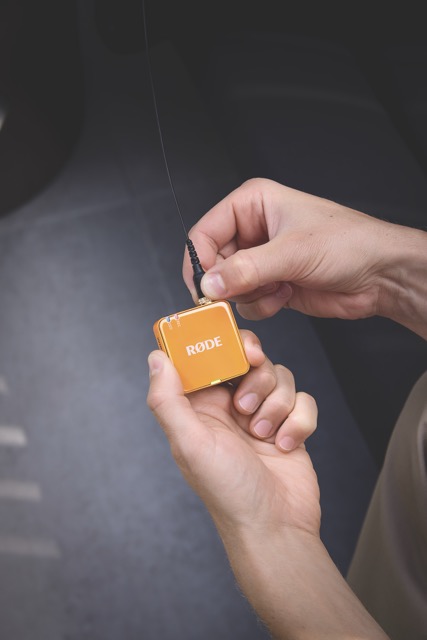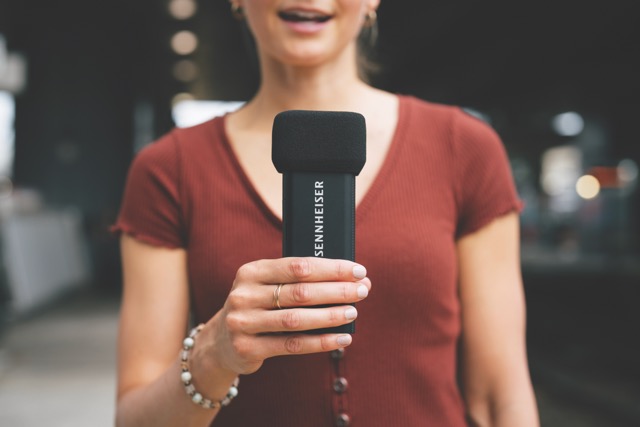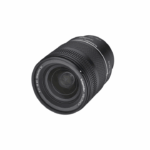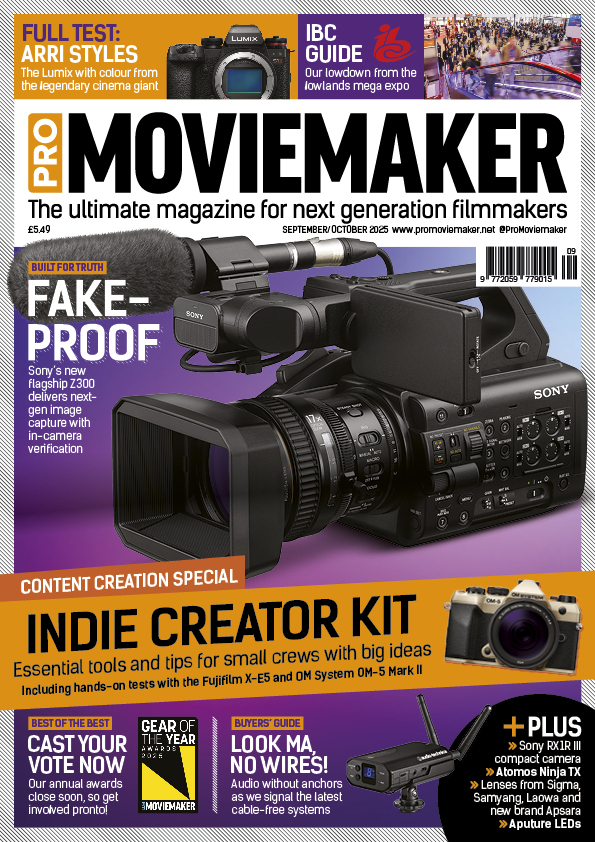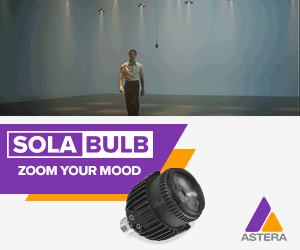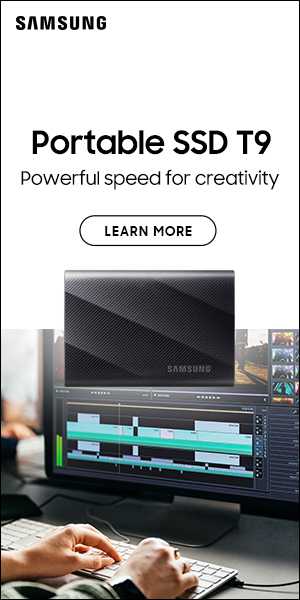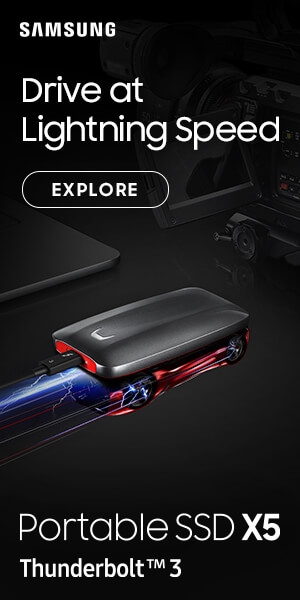
Buyer’s guide: Wireless mics
Posted on Oct 2, 2025 by Adam Duckworth
Cut those cables
The ultimate guide to the latest wireless mics – when clear audio and creative freedom go hand in hand
Words Adam Duckworth
Compact, reliable and easier to use than ever, wireless audio has become an essential part of the filmmaker’s kit. Gone are the days of tripping over cables or wrestling to pair over-complex transmitters. The latest wireless mic systems deliver broadcast-quality audio with features like built-in recording, auto-pairing, long battery life and crystal-clear transmission – even in tricky environments.
We investigate the latest options from industry leaders such as Rode, Sennheiser, Shure, Audio-Technica, Deity and more – from pro-level lav kits to ultra-portable solutions for content creators who want clean sound without the fuss.
DJI Mic 2
£219/$349
The DJI is genuinely wireless, if you’re a Sony user. Though many audio units are called wireless, they need a cable to send the signal from the receiver to the camera. DJI’s Mic 2 can be used like this, but the receiver unit can accept the optional £29/$49 Sony MI Shoe adapter.
This adapter allows integration with an Alpha camera without cables. Use this, and the camera can control audio settings and supply power to the receiver too.
Whatever you choose to pair it with, the DJI Mic 2 has an extended battery life compared to the original version, as well as a new control screen, 32-bit float internal recording and intelligent noise-cancelling to boot.
Each transmitter includes 8GB of
internal storage, offering up to 14 hours of uncompressed 48kHz 24-bit audio. For an added layer of protection, the DJI Mic 2 offers a Safety Track feature which records a second track at -6dB alongside the primary audio track, safeguarding against unexpected audio level spikes.
The DJI Mic 2 comes in a charging case, which automatically pairs the receiver and transmitters. It can also be connected to the DJI Osmo Action 4 and Osmo Pocket 3 mini gimbal via Bluetooth.
- Pros: Great for Sony MI users
- Cons: New version on the way soon
Deity Theos
£989/$1090
The high-end Deity Theos features swappable frequency ranges based on the user’s phone GPS, making it easy to move between countries without issues. It uses the UHF radio spectrum, giving reliable transmission at up to 91m/300ft range.
The kit includes one receiver and twin transmitters. Each has a built-in recorder featuring 24-bit and 32-bit float formats. When recording 32-bit, you don’t have to set levels as the backup files will record it all without clipping, and the audio is saved to a micro SD card.
Sync the transmitter wirelessly to Deity’s TC-1 timecode generator, which is ideal for working with multiple cameras. It syncs to third-party timecode generators via the 3.5mm jack too. The dual-channel receiver is camera-mountable and also compatible with mobile devices. Each unit is contained in an aluminium chassis with twin SMA antenna ports.
Power comes from internal 3000mAh lithium batteries, which last for around 14 hours in the transmitter and ten in each receiver. Recharge via the USB port, which can also provide external power. AA batteries can be fitted, lasting for around seven hours. The Theos can be remotely controlled using the Sidus Link app.
- Pros: Very high spec and build
- Cons: Not the cheapest option
Audio-Technica System 10 Camera-Mount
£337/$439
The Audio-Technica System 10 Camera-Mount is a traditional-style, high-fidelity digital wireless audio that supports lavalier, handheld and bodypack transmitter configurations. It doesn’t come with a mic, though, so you’ll need to budget separately for a lav or reporter mic. The ATW-1701 kit features a bodypack transmitter with a four-pin locking connector.
Operating in the 2.4GHz band, System 10 avoids the crowded UHF TV broadcast frequencies for reliable and interference-free transmission in any region. Audio is transmitted and received in 24-bit, 48kHz digital resolution, maintaining complete bandwidth clarity with low latency and minimal signal degradation.
A key strength is its triple-diversity tech, meaning frequency, time and spatial components work together to reduce dropouts and maintain signal integrity. Frequency diversity sends the signal on two dynamically assigned frequencies, time diversity sends it at different time intervals and spatial diversity uses dual antennae on the receiver and transmitter to reduce interference. The ultra-compact receiver offers balanced or unbalanced output, headphone monitoring with independent volume control and a built-in rechargeable battery giving up to 12 hours of runtime. It also features auto frequency selection, instant pairing and support for up to eight simultaneous transmitter links per receiver.
- Pros: Unique triple-diversity technology
- Cons: No mics included
Shure SLX-D Bodypack and receiver
£704/$671
Shure’s SLX-D Digital Wireless range is powered by the SLXD5 single-channel portable digital wireless receiver at £429/$419. This is a compact, camera-mountable unit that pairs with the SLXD1 bodypack transmitter at £275/$252, but you might also want the SLXD3 plug-on transmitter for £379/$389, which enables wireless connectivity for any XLR microphone, including condenser mics, thanks to built-in phantom power. It’s ideal for wireless transmission from boom-mounted, XLR-fit shotgun mics.
The SLXD5 receiver attaches to a camera via the included coldshoe mount, and features IR sync for fast pairing with transmitters. Its Multi-Mic Mode allows users to monitor and manage multiple transmitters from a single receiver. Both the SLXD5 and SLXD3 offer bright OLED displays for readouts of RF quality, audio metering and battery life. Operating in the 24-bit domain, the system has a dynamic range over 118dB, up to 32 channels per 44MHz band and works at a 100m/330ft distance. Power is from USB-C or Shure’s SB903 rechargeable batteries.
Plus, the new Wireless Workbench Mobile app offers management of Shure wireless systems on the move, from an Android device or iPhone. Tools available on the free app include guided alerts and mobile frequency coordination to help troubleshoot any issues.
- Pros: High quality for pro results
- Cons: No lav mic included or 32-bit float
Hollyland Lark M2S
£139/$139
Hollyland’s new Lark M2S is the sixth generation of its super-compact wireless microphone series built to record high-quality audio with maximum discretion. It has an ultra-compact, logo-free design and weighs just 7g, allowing it to be fixed to clothing for super-stealthy use. The transmitters aren’t much bigger than a standard lav mic.
Despite the tiny size, the M2S operates on the 2.4GHz band with a range of up to 300 metres, and features a high-resolution, 24-bit, 48kHz sampling rate with 70dB signal-to-noise ratio for clear and nuanced vocal capture. Hollyland’s Environmental Noise Cancellation helps isolate the speaker’s voice too, even when recording in busy environments.
Each transmitter lasts up to nine hours at a time, and can be recharged on the go using the included portable charging case, which extends total battery life to 30 hours. A titanium alloy clip keeps the unit securely in place during movement, offering durability without bulk.
The Lark M2S Combo kit comes with the charging case that houses two transmitters and two receivers, one for a camera and another with USB-C for use on smartphones or computers. Furry windshields for blustery days are also included. The Lark Sound app allows for real-time monitoring and control of audio settings, gain and noise reduction.
- Pros: Truly tiny transmitters
- Cons: No 32-bit float recording
Rode Wireless Go (Gen 3)
£249/$299
Rode’s latest Wireless Go (Gen 3) is a dual-channel kit that comes with a single receiver and two transmitters which have built-in 32-bit float recording, plus intelligent Gain Assist technology to ensure you don’t clip your highs. The new Go comes in black, white or lots of other limited-edition colours.
The Wireless Go (Gen 3) now uses Rode’s latest Series IV 2.4GHz digital transmission with 128-bit encryption for stable audio at up to 260m, with line of sight. There are more than 40 hours of 32-bit float on-board recording, but the signal sent directly to the camera is not in 32-bit. A safety channel can be set at a lower gain in case of sudden loud noises. The Gain Assist has two modes – Auto and Dynamic – or can be turned off to allow manual adjustment.
The kit has locking lavalier connectors and headphone monitoring with on-board level control. To extend battery life, the Go detects when the camera is on or off and follows suit.
The system can be configured on a computer or smart device via the Rode Central app, although the most important adjustments can be selected via the LCD display and control buttons. Its built-in microphones have omnidirectional pickup patterns, and the Go outputs a signal via USB-C for digital audio or 3.5mm TRRS analogue for phones.
- Pros: The Go-to for mini wireless audio
- Cons: Older Pro version is often cheaper
Saramonic K9
£775/$999
Saramonic’s latest K9 is a dual-channel UHF wireless audio system for professional users with high-spec demands. It’s built for robust performance in real-world environments, operating across a wide 550-960MHz UHF band, enabling global deployment via GPS-based frequency unlocking. The system features 32-bit float on-board recording with 32GB of internal storage, allowing lossless capture of audio even during RF dropout as a fail-safe for location work. Audio is recorded with a 130dB input dynamic range and delivered via a 120dB analogue output.
Precise wired and wireless timecode synchronisation ensures frame-accurate AV alignment across multicam shoots, significantly reducing post workflows. Dual displays on the receiver – including a top-mounted screen – show critical info. The included IP67-rated, 3mm lav mic is compact and resistant to water and dust.
Control and configuration are handled through the Saramonic System app, which allows remote pairing, gain adjustment, real-time level monitoring and firmware updates across up to 48 systems. The K9 offers up to nine hours of battery life per transmitter with USB-C fast charging. Two models are available – the global version includes all features while the US one disables simultaneous recording and transmission due to patent restrictions, enforced by GPS-based software.
- Pros: High-spec and top-grade lav mic
- Cons: Not great for American buyers
Sennheiser Profile Wireless
£229/$265
The Sennheiser Profile Wireless 2-Channel Set is something very different in a world where many wireless mic systems offer strikingly similar features. The Profile system comes in a unique case, which doesn’t just charge up the TX and RX units but also becomes a functional handheld microphone. Pop on the included foam windshield and you’re ready to go, as it uses the transmitter unit inside to broadcast 24-bit, 48kHz audio straight to the on-camera receiver. The carry case stores the two clip-on transmitter units, a receiver, USB-C and Lightning adapters for smartphones plus a coldshoe for mounting on a camera. It also comes with a coiled TRS cable for standard 3.5mm mic inputs.
Pairing is instantaneous when the units are removed from the case. The receiver’s compact touchscreen offers gain control, low cut, mute, LED brightness, headphone monitoring and screen orientation as well as stereo, mono or safety-track audio output. It displays the available recording time left on each transmitter, with up to 30 hours of internal backup per unit in 24-bit or 22.5 hours in 32-bit float quality.
Each TX unit features a built-in omnidirectional mic, plus a 3.5mm locking input for lavaliers. The on-board backup recording is activated via a button on the transmitters or using the RX touchscreen. Recordings are easily retrieved via USB-C; no app or proprietary software needed.
- Pros: Great price and functions
- Cons: Reporter mic doesn’t look great
This article was first published in the September/October 2025 issue of Pro Moviemaker


